In the rapidly evolving world of security technology, clarity is king. Gone are the days when blurry, pixelated footage was acceptable for evidence. Today, homeowners and small business owners demand footage sharp enough to identify faces, read license plates, and definitively document events. This demand has firmly established the 2k cctv camera as the optimal choice, striking a perfect balance between high-definition clarity and manageable system requirements.
The shift toward higher resolutions like 2K (also known as Quad HD or 1440p) represents a significant leap from the traditional 1080p systems that dominated the market for years. While 4K systems offer even higher resolution, they often come with prohibitive storage and bandwidth costs. The 2k security camera provides a critical middle ground, delivering four million pixels of detail—a vast improvement over standard HD—without overwhelming your network or storage capacity.
This guide will thoroughly explore what defines a 2K camera, why this resolution is rapidly becoming the industry standard, and what features you should prioritize when upgrading your 2k home security camera system.
Contents
- 1 Understanding Resolution: What Exactly is a 2K CCTV Camera?
- 2 The Compelling Advantages of Choosing a 2K Security Camera System
- 3 Key Features to Look for in a Modern 2K Home Security Camera
- 4 Installation and Setup: Deploying Your 2K Surveillance Network
- 5 Comparative Analysis: 2K vs. 4K CCTV Cameras – Finding the Sweet Spot
- 6 Addressing Common Misconceptions and Future Trends of 2K Security Technology
- 7 Final Verdict: Why the 2K CCTV Camera is the Benchmark for Modern Security Needs
Understanding Resolution: What Exactly is a 2K CCTV Camera?
Before diving into the features and benefits, it’s essential to clarify the technical specifications of 2K. The term “2K” is often used interchangeably with 1440p or Quad High Definition (QHD). While the naming convention can sometimes be confusing, the core concept revolves around the total pixel count and the resulting image quality.
Defining Quad HD (QHD) and 1440p
When discussing video resolution, the number typically refers to the vertical pixel count. Standard Full HD (FHD) is 1080p, meaning 1,920 pixels horizontally by 1,080 pixels vertically.
A 2k cctv camera, adhering to the QHD standard, possesses a resolution of 2,560 pixels horizontally by 1,440 pixels vertically.
Why is this called “2K”? The name derives from the horizontal pixel count, which is approximately 2,000. It’s important to note that true cinematic 2K (DCI 2K) is technically 2048 x 1080, but in the consumer security market, 2K is universally understood to mean 1440p. This superior pixel density is what allows the camera to capture significantly more intricate visual information.
The Critical Difference: 2K vs. 1080p Full HD
The most compelling reason to choose a 2k security camera over a standard 1080p model lies in the sheer volume of data captured. A 1080p image contains roughly 2.07 million pixels. A 1440p (2K) image contains approximately 3.68 million pixels.
This 78% increase in total pixels translates directly into tangible benefits:
- Wider Coverage: A 2K image can cover a larger area while maintaining detail equivalent to a zoomed-in section of a 1080p image.
- Increased Clarity: Objects and fine lines are rendered much sharper, reducing the blurring effect commonly seen in lower resolutions.
If you are replacing an older system, the transition to a modern 2k home security camera will feel like moving from a standard-definition television to a high-definition screen—the difference is unmistakable, especially when attempting to analyze forensic detail.
Where 2K Sits in the Resolution Hierarchy
To fully appreciate the 2K standard, it helps to place it within the context of other popular security resolutions:
- 720p (HD): Obsolete for serious security needs.
- 1080p (FHD): The previous minimum standard; good for general overview, poor for detail capture.
- 2K (QHD/1440p): The new standard; excellent balance of detail and efficiency.
- 4K (UHD/2160p): Highest consumer resolution; offers immense detail but demands significant storage and processing power.
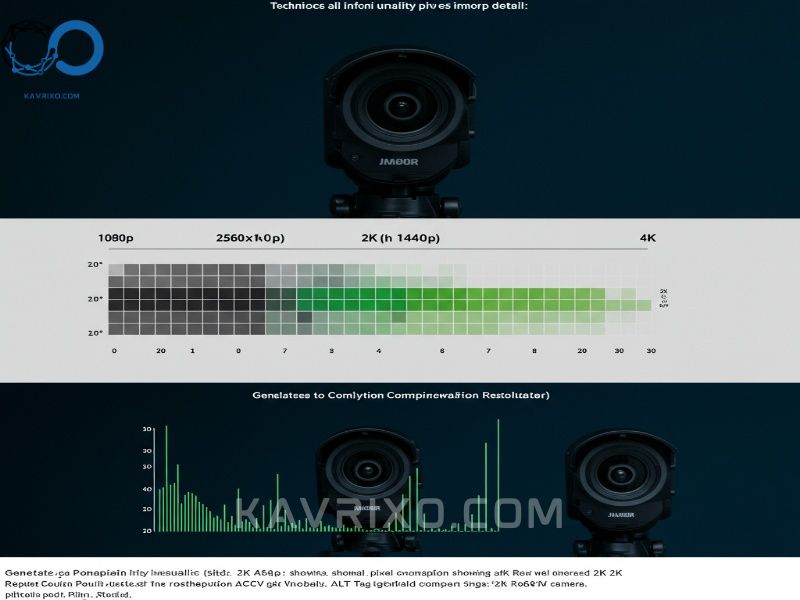
The Compelling Advantages of Choosing a 2K Security Camera System
Choosing a 2k cctv camera is more than just buying a higher number; it’s an investment in verifiable evidence. The practical benefits of QHD resolution fundamentally alter how effective your surveillance system is in real-world scenarios.
Superior Detail and Digital Zoom Capabilities
Perhaps the single greatest advantage of 2K resolution is its ability to handle digital zoom without instantly turning the image into a blocky mess. When an incident occurs, you inevitably need to zoom in on a specific area—a face, a license plate, or an item being stolen.
In a 1080p system, zooming digitally crops the already limited pixels, quickly resulting in unusable, heavily pixelated footage. A 2k security camera starts with nearly double the data, meaning you can crop in closer (up to 78% further, theoretically) while maintaining the baseline clarity needed for identification. This “digital pan and zoom” capability after the fact is crucial for forensic review.
Enhanced Identification and Evidence Capture
For security footage to be truly valuable, it must be admissible and conclusive. This requires clarity in identifying subjects.
- Facial Recognition: At typical monitoring distances (10–30 feet), 2K footage is far more likely to capture the specific facial features required for law enforcement identification than 1080p.
- License Plates: Reading a license plate, especially in motion or at night, is a common failure point for 1080p cameras. The superior detail provided by a 2k home security camera dramatically improves the odds of capturing those critical alphanumeric characters.
This enhanced identification capability moves the camera from being a passive deterrent to an active evidence-gathering tool.
Optimal Bandwidth Balance
While 4K resolution offers the ultimate clarity, it demands enormous bandwidth (for transmission) and storage space (for recording). A 4K stream can easily consume two to three times the network resources of a 2K stream.
The 2k cctv camera provides an “efficiency sweet spot.” It delivers outstanding image quality while keeping the required data rates manageable for standard home or small business internet connections and Wi-Fi networks. This balance is particularly important for users relying on cloud storage or for those with multiple cameras recording simultaneously.
Improved Low-Light Performance
Counterintuitively, higher resolution often aids in low-light performance, provided the camera utilizes a quality image sensor. Because the 2K sensor gathers more visual information overall, modern QHD cameras can employ better noise reduction algorithms.
Furthermore, many top-tier 2k security camera models now incorporate Starlight sensors or similar low-light technology. These sensors, combined with the 1440p resolution, can produce surprisingly clear, often color, images even in near-dark conditions where older 1080p cameras would have reverted to grainy black and white infrared footage.
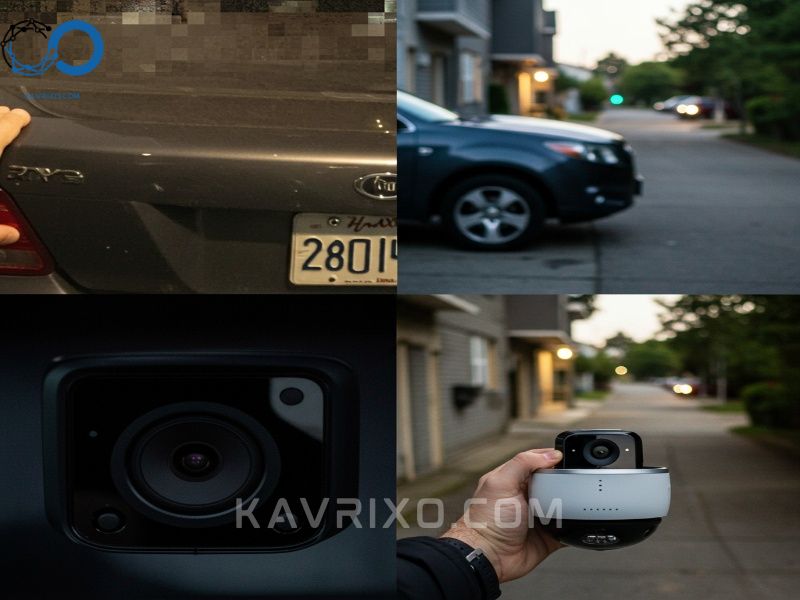
Key Features to Look for in a Modern 2K Home Security Camera
Resolution is the foundation, but a camera’s true performance is determined by its auxiliary features and processing capabilities. When selecting a high-performing 2k home security camera, consider these critical components beyond the 1440p rating.
Field of View (FoV) and Lens Quality
The resolution defines how sharp the image is, but the lens quality and field of view determine how much of the scene is captured.
- Fixed vs. Varifocal Lenses: Most residential 2K cameras use fixed lenses (e.g., 2.8mm or 4mm). A wider angle (2.8mm) is excellent for covering a large yard or living room, sacrificing some distant detail. A narrower angle (4mm) is better for focused coverage, such as a doorway or driveway. High-end 2k cctv camera systems may offer varifocal lenses, allowing you to physically adjust the focal length (and zoom level) to perfectly match your viewing area before installation.
- Lens Aperture (f-stop): Look for a low f-stop number (e.g., f/1.6). A lower number means the lens lets in more light, which is crucial for maximizing the 2K resolution’s potential in challenging lighting conditions.
Advanced Night Vision Technologies
Traditional infrared (IR) night vision is effective but lacks color and depth. Modern 2k security camera systems leverage advanced technology to improve nighttime clarity and color retention:
- Color Night Vision/Starlight: Cameras with large, sensitive image sensors (often called Starlight sensors) can capture enough ambient light (from streetlights, the moon, etc.) to render a full-color image even in very low light. This is a game-changer for evidence gathering, as color helps tremendously with identification (clothing, vehicle color).
- Smart IR: This feature automatically adjusts the intensity of the infrared LEDs based on the distance of the object, preventing the “whiteout” effect that occurs when a subject approaches the camera too closely.
Storage Solutions: Local vs. Cloud Recording
How you store the massive amounts of data captured by a high-resolution 2k home security camera dictates the reliability and accessibility of your footage.
- Local Storage (NVR/SD Card): Network Video Recorders (NVRs) are the gold standard for continuous recording. They handle high bandwidth and can store weeks or months of 2K footage. SD cards are suitable for single-camera setups or as a backup, but they generally have limited capacity.
- Cloud Storage: Offers remote access and protection against physical theft of the camera/NVR. However, storing 2K streams reliably requires a robust internet upload speed, and services usually involve a monthly fee.
A hybrid approach—local NVR storage for continuous recording coupled with cloud backup for critical event clips—often provides the best redundancy.
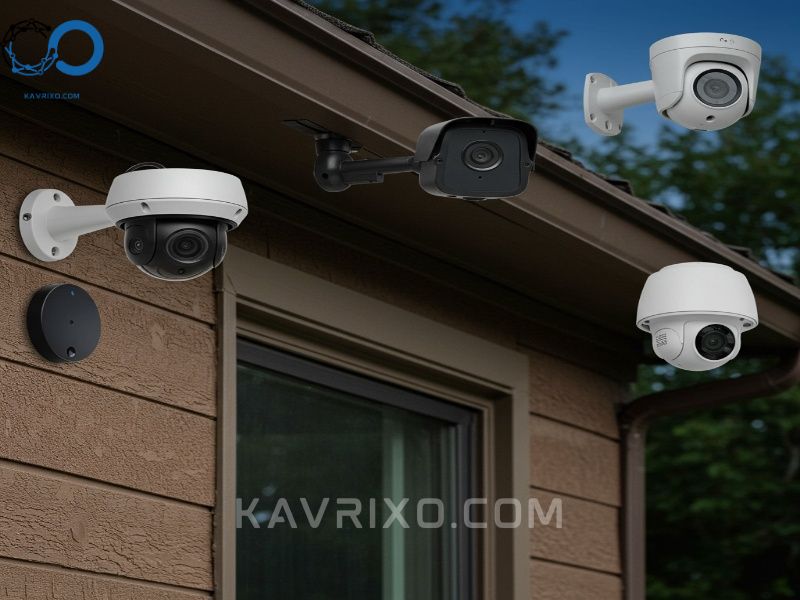
Smart Detection and AI Integration
The high resolution of 2K cameras feeds directly into the performance of onboard Artificial Intelligence (AI). More detailed images allow AI algorithms to analyze scenes with greater accuracy.
Look for features such as:
- Person and Vehicle Detection: This dramatically reduces false alarms caused by moving trees, shadows, or animals, ensuring you are only notified of relevant activity.
- Facial Recognition: Higher-end 2k cctv camera systems can learn and recognize familiar faces, alerting you only when an unknown person is detected.
- Line Crossing/Intrusion Zones: Allowing you to define specific virtual boundaries that trigger an alert when breached.
Installation and Setup: Deploying Your 2K Surveillance Network
The quality of your footage is only as good as your installation setup. Deploying a new 2k security camera system requires careful planning regarding power, networking, and placement.
Wired vs. Wireless 2K Systems (PoE vs. Wi-Fi)
The choice between Power over Ethernet (PoE) and Wi-Fi significantly impacts reliability and ease of installation:
- PoE (Wired): PoE cameras transmit both data and power through a single Ethernet cable. This is the most reliable option for continuous 2K streaming. Wired 2k cctv camera systems eliminate potential Wi-Fi interference, ensure stable bandwidth, and simplify power routing, making them ideal for permanent, professional installations.
- Wi-Fi (Wireless): Wireless 2K cameras are easier to install since they only require access to a power source. However, streaming high-resolution 1440p video continuously over Wi-Fi can strain your network, especially if the camera is far from the router. Ensure the camera supports dual-band Wi-Fi (2.4 GHz and 5 GHz) and that your home network is robust enough to handle the increased data load.
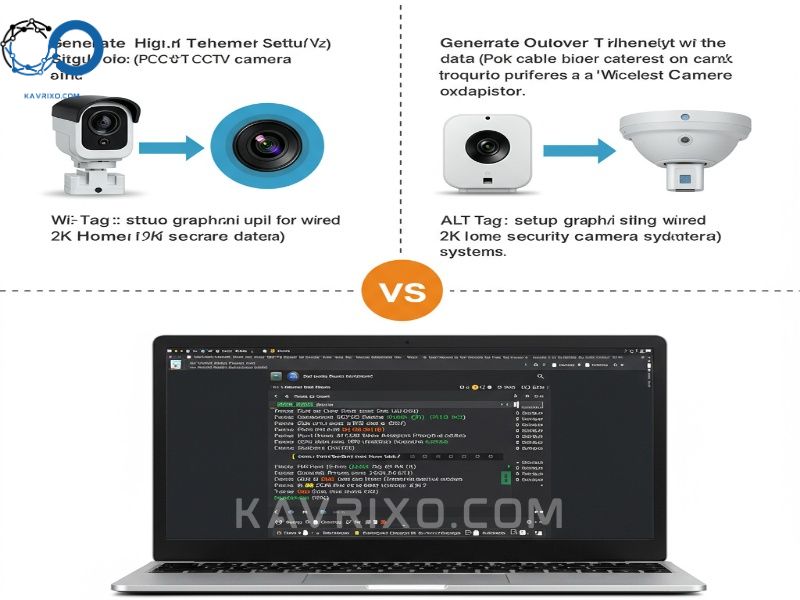
Optimal Placement for Maximum Coverage
When installing a 2k home security camera, precision placement is key to leveraging the high resolution:
- Height and Angle: Mount cameras high enough (8–10 feet) to prevent tampering but angled steeply enough to capture facial details rather than just the tops of heads.
- Targeted Zones: Use the superior detail of the 2K resolution to focus on high-risk areas—entrances, ground-floor windows, driveways, and back gates.
- Lighting Considerations: Avoid aiming the lens directly into strong light sources (like the setting sun), as this can silhouette the subject. If unavoidable, choose cameras with superior Wide Dynamic Range (WDR) technology to balance bright and dark areas in the frame.
Network Requirements and Bandwidth Management
A high-resolution 2k security camera requires stable network performance.
For systems using an NVR, the primary concern is the internal network speed (LAN). Ensure your cables are at least Cat5e or Cat6 to handle the high data throughput.
For remote viewing and cloud uploads, upload speed is critical. While a single 2K stream might only require 2–4 Mbps of dedicated upload bandwidth, a system with four or more cameras simultaneously uploading clips can quickly bottleneck a standard residential internet connection. If relying heavily on cloud backups, ensure your service provider offers sufficient upload speeds.
Comparative Analysis: 2K vs. 4K CCTV Cameras – Finding the Sweet Spot
The competition between 2K (1440p) and 4K (2160p) is often the final hurdle for buyers. While 4K undeniably offers more pixels, the practical implementation often makes the 2k cctv camera a more sensible choice for the vast majority of consumer and small business applications.
Cost-Effectiveness and Value Proposition
4K cameras and the necessary supporting hardware (NVRs with powerful chipsets, larger hard drives) typically carry a significant price premium—sometimes 30% to 50% more than comparable 2K equipment.
The 2k security camera delivers a massive upgrade in clarity over 1080p for only a marginal increase in cost. For most residential properties, the clarity gained by jumping from 1080p to 2K is sufficient to meet all identification needs. Spending the extra money for 4K often yields diminishing returns unless monitoring vast distances or extremely large public areas.
Storage Demands and Hardware Requirements
This is where the 2K system shines brightest in terms of practicality.
- Storage: 4K footage consumes roughly twice the storage space of 2K footage. This means a 4-camera 4K system will require a hard drive double the size of a 4-camera 2K system to achieve the same recording retention period (e.g., 30 days).
- Processing Power: 4K streams require significantly more powerful processors in both the camera itself and the NVR to encode and decode the video in real-time, especially when using efficient compression standards like H.265. The lower processing overhead of a 2k home security camera means the system runs cooler, more reliably, and at a lower cost.
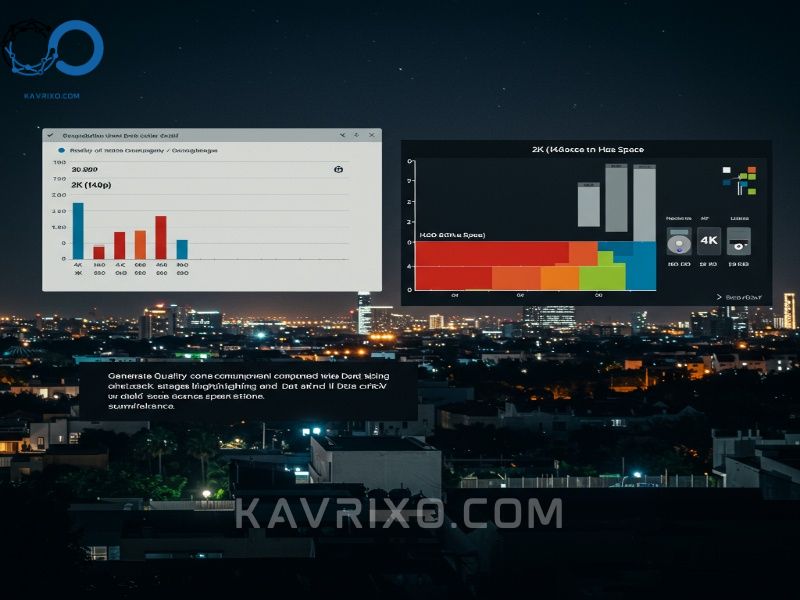
When is 2K the Better Choice?
A 2k cctv camera is the definitive better choice for:
- Residential Security: Where the distances monitored are manageable (under 50 feet).
- Bandwidth Constraints: Homes with slower internet upload speeds or congested Wi-Fi networks.
- Budget-Conscious Users: Those seeking the best performance-to-cost ratio.
- Existing Infrastructure: Systems that need to integrate with older networking hardware that might struggle with high 4K data rates.
4K is only truly necessary for specialized applications, such as monitoring expansive parking lots, large commercial facilities, or public venues where extreme zoom capability over hundreds of feet is required.
Addressing Common Misconceptions and Future Trends of 2K Security Technology
As technology matures, understanding the nuances of the 2k security camera market helps consumers make informed decisions.
Myth Busting: Does Higher Resolution Always Mean Better Security?
A common misconception is that resolution is the only metric that matters. This is false. A cheap 4K camera with a poor image sensor and lens will produce worse nighttime footage than a high-quality 2k home security camera utilizing Starlight technology and advanced WDR.
True security effectiveness is a synergy of:
- Resolution (1440p): Provides the foundational detail.
- Lens Quality: Ensures light gathering and focus accuracy.
- Sensor Quality: Determines low-light performance and color fidelity.
- Processing Power (AI): Reduces false alarms and enhances useful alerts.
Always prioritize a reputable brand’s 2K offering over an unknown brand’s 4K offering.
The Role of Compression (H.265 vs. H.264)
To keep 2K streams manageable, modern cameras utilize efficient video compression standards. H.264 was the standard for 1080p, but high-resolution systems must use H.265 (or HEVC – High-Efficiency Video Coding).
H.265 compression can compress video by up to 50% more effectively than H.264 while maintaining the same perceived quality. Ensure any new 2k cctv camera system you purchase fully supports H.265 to maximize your storage space and minimize bandwidth usage, reinforcing the efficiency advantage of 2K.
Integrating the 2K Camera into the Smart Home Ecosystem
The modern 2k home security camera is no longer a standalone device; it’s an integrated component of the smart home. Compatibility with major platforms like Amazon Alexa, Google Home, and Apple HomeKit is essential for easy monitoring.
Integration allows users to:
- View live 2K feeds on smart displays (like an Echo Show).
- Trigger automated actions (e.g., turning on outdoor lights when the camera detects a person).
- Receive instant, actionable alerts via mobile devices.
The clarity of the 2K image enhances the performance of these integrations, allowing smart displays to show crisp, clear images instantly.
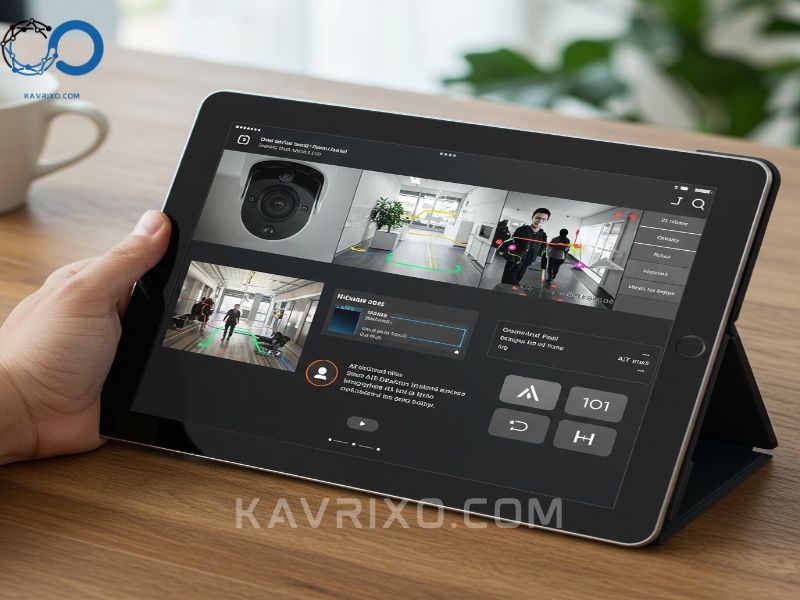
Final Verdict: Why the 2K CCTV Camera is the Benchmark for Modern Security Needs
The goal of any security system is to provide comprehensive coverage and conclusive evidence. The 2k cctv camera achieves this goal with remarkable efficiency and affordability. It delivers nearly twice the detail of the former 1080p standard, providing the necessary clarity for forensic identification without the high price tag or demanding infrastructure requirements of 4K.
For consumers seeking an intelligent, reliable, and future-proof surveillance solution, the Quad HD (1440p) 2k security camera represents the best overall investment today. It is the sweet spot where high performance, manageable data, and cost-effectiveness converge, truly defining the new era of high-definition 2k home security camera systems. If you are planning an upgrade, look no further than the robust and reliable 2K platform.

Pingback: The Definitive Guide to Choosing a 4K Camera System for Home with NVR System - Kavrixo Blog